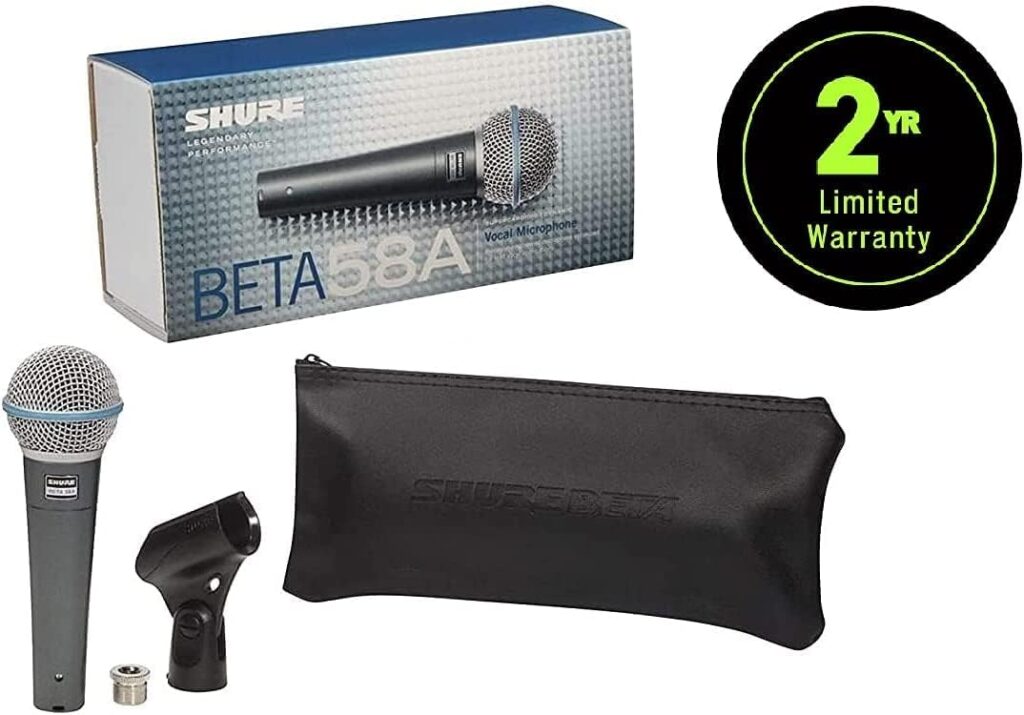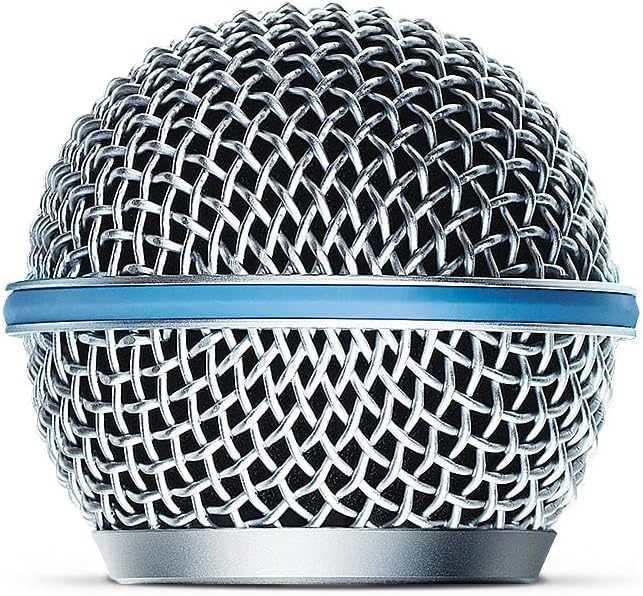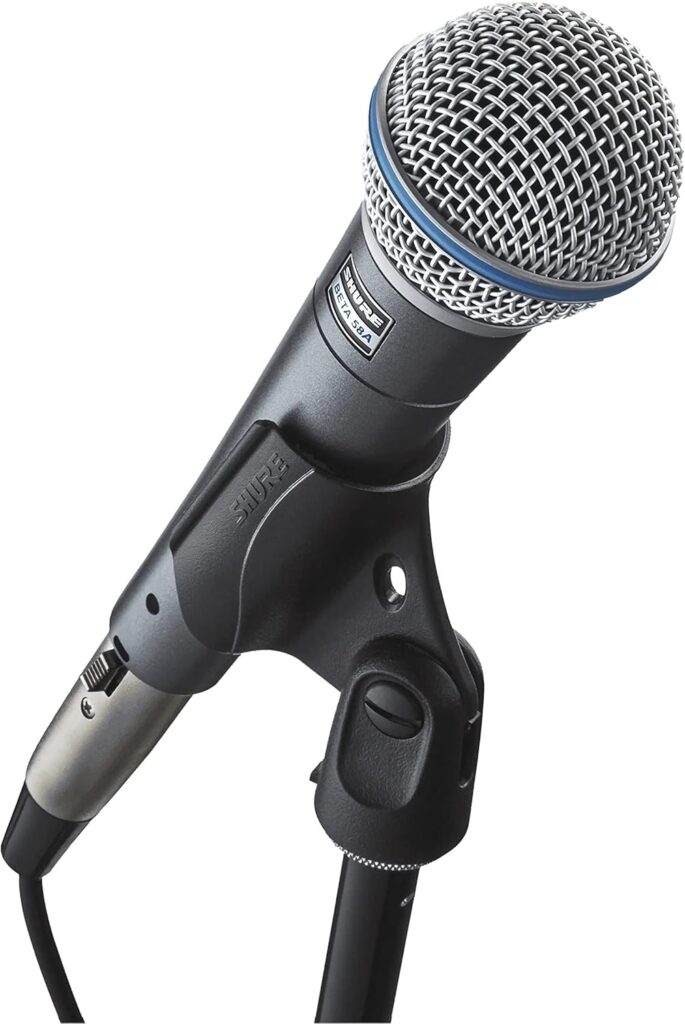Shure Beta 58A Review
When it comes to microphones designed for live performance, few names carry the weight and reputation of Shure. The Shure Beta 58A, an evolution of the legendary SM58, is a dynamic vocal microphone that has become a staple for singers, speakers, and sound engineers worldwide. Known for its rugged build, excellent sound reproduction, and versatility, the Beta 58A promises to deliver professional-grade performance in a variety of settings. But does it live up to the hype? In this review, we’ll explore every facet of the Shure Beta 58A, from its physical construction to its sonic characteristics, practical applications, and how it compares to other microphones in its class.
Shure Beta 58A Review
The Shure Beta 58A is a supercardioid dynamic microphone, designed primarily for vocal applications in live sound environments. Introduced as part of Shure’s Beta series, it builds on the foundation of the iconic SM58 while offering enhancements tailored to modern performance needs. The Beta 58A is often marketed as a premium alternative to the SM58, boasting improved clarity, a tighter polar pattern, and a slightly brighter sound profile. Priced typically between $150 and $200 USD (as of March 2025), it sits in the mid-range category, making it accessible to both amateur performers and seasoned professionals.
Shure’s reputation for durability and reliability is well-earned, and the Beta 58A continues that tradition. It’s a microphone built to withstand the rigors of the road, from sweaty club gigs to large outdoor festivals. But beyond its toughness, the Beta 58A aims to deliver superior audio quality, making it a go-to choice for vocalists who need their voice to cut through dense mixes. Let’s break down its key features and performance.
Design and Build Quality
At first glance, the Shure Beta 58A looks like a classic handheld microphone, with a sleek, utilitarian design that’s instantly recognizable. Its body is constructed from die-cast metal, giving it a substantial feel in the hand—neither too light nor excessively heavy, weighing in at approximately 9.9 ounces (280 grams). The grille is made of hardened steel mesh, designed to protect the capsule while resisting dents and dings from inevitable drops or knocks.
The microphone’s matte silver finish is understated yet professional, and the grille features a subtle blue ring near the top—a signature touch of the Beta series. Ergonomically, it’s comfortable to hold for long periods, with a slightly tapered body that fits naturally in the palm. The build quality exudes confidence; this is a tool meant to last, and Shure backs that up with a reputation for products that can endure decades of use.
One standout feature of the Beta 58A’s design is its internal shock-mount system, which reduces handling noise—a critical advantage for animated performers who move around on stage. The microphone also includes a pneumatic shock absorber to minimize mechanical noise and vibrations, ensuring that the sound remains clean even during energetic performances.
Sound Quality: The Supercardioid Advantage
The heart of the Shure Beta 58A is its dynamic capsule, paired with a supercardioid polar pattern. Unlike the cardioid pattern of the SM58, the supercardioid design offers a narrower pickup area, which provides several key benefits. First, it enhances off-axis rejection, meaning it’s less likely to pick up unwanted stage noise—like drum bleed or monitor feedback. Second, it increases gain before feedback, allowing vocalists to push their levels higher without squealing or howling.
The frequency response of the Beta 58A spans from 50 Hz to 16 kHz, with a tailored curve that emphasizes vocal presence. There’s a noticeable boost in the midrange (around 2-5 kHz), which helps vocals stand out in a mix, and a gentle roll-off in the low frequencies to reduce muddiness and proximity effect. Compared to the SM58, the Beta 58A has a slightly brighter and more detailed top end, giving it a crispness that many singers appreciate.
In practice, the sound quality is warm yet articulate. The microphone captures the nuances of a singer’s voice—whether it’s a smooth croon or a powerful belt—without introducing harshness. The supercardioid pattern does require more precise mic technique than a cardioid mic; vocalists need to stay on-axis for consistent volume and tone. However, this trade-off is often worth it for the improved feedback rejection and clarity.
The Beta 58A isn’t just for singing, either. It performs admirably with spoken word, making it a favorite for live speeches, podcasts (with an appropriate interface), and even instrument miking in a pinch. While it’s not a condenser mic with ultra-fine detail, its dynamic nature ensures reliability in high-SPL (sound pressure level) environments, handling volumes up to 140 dB without distortion.
Who is it for
The Shure Beta 58A shines brightest in live sound scenarios. Its combination of durability, feedback resistance, and vocal-tailored sound makes it ideal for:
- Live Music Performances: Whether you’re a solo acoustic artist or the frontperson of a rock band, the Beta 58A delivers consistent, high-quality sound. It’s particularly effective in noisy environments where stage monitors and instruments compete for sonic space.
- Public Speaking: Event hosts, lecturers, and MCs benefit from its clarity and ability to project the voice without picking up crowd noise.
- Houses of Worship: Many churches and religious venues use the Beta 58A for sermons and musical performances, thanks to its reliability and ease of use.
- Karaoke and Amateur Use: While it’s a professional-grade mic, its forgiving nature makes it suitable for casual settings too.
In the studio, the Beta 58A is less common but not entirely out of place. It can be used for recording vocals or instruments when a dynamic mic’s characteristics are desired—think gritty rock vocals or close-miked guitar amps. However, for pristine studio work, condenser mics typically take precedence.
Comparison to the Shure SM58
The inevitable question: how does the Beta 58A stack up against its sibling, the SM58? The SM58, often dubbed the “industry standard,” is a cardioid dynamic mic with a slightly broader pickup pattern and a warmer, less pronounced high-end. It’s also cheaper, typically retailing for $100-$120 USD. The Beta 58A, by contrast, offers a more modern sound with enhanced clarity and feedback resistance, justifying its higher price.
If you’re on a budget or prefer a forgiving mic that doesn’t demand precise technique, the SM58 might suffice. But for louder, more complex stage setups—or if you simply want a step up in sound quality—the Beta 58A is the better choice.
Comparison to Competitors
The Beta 58A isn’t alone in its category. Competitors like the Sennheiser e945 and Audio-Technica AE4100 offer similar features. The Sennheiser e945, another supercardioid dynamic mic, delivers a smoother high-end and slightly wider sweet spot, but it’s pricier (around $200-$250). The Audio-Technica AE4100, meanwhile, matches the Beta 58A’s clarity and durability at a comparable price, though some users find its sound less warm.
Ultimately, the Beta 58A holds its own with a balance of performance, reliability, and brand trust that’s hard to beat.
Who Should Buy the Shure Beta 58A?

The Shure Beta 58A is ideal for:
- Vocalists performing in loud or feedback-prone environments.
- Sound engineers seeking a dependable workhorse mic.
- Anyone upgrading from an entry-level microphone like the SM58.
- Performers who value durability and consistent sound over time.
It’s less suited for those needing a lightweight mic, beginners still mastering technique, or studio purists chasing condenser-level detail.
Conclusion
The Shure Beta 58A is more than just an upgrade to the SM58—it’s a refined tool that meets the demands of modern live performance. Its rugged construction, excellent sound quality, and supercardioid precision make it a standout choice for vocalists and speakers alike. While it’s not without minor drawbacks, such as its learning curve and studio limitations, these are overshadowed by its strengths in real-world use.
For anyone serious about live sound, the Beta 58A is a worthy investment. It embodies Shure’s legacy of quality while pushing the envelope just far enough to feel fresh. Whether you’re belting out a ballad or delivering a keynote, this microphone ensures your voice is heard—loud, clear, and uncompromised.




